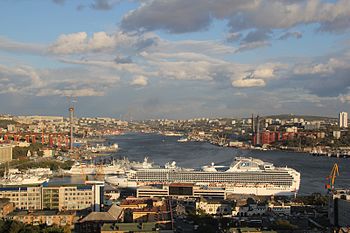
Santiago de Chile is the capital and largest city of Chile, and the center of its largest conurbation (Greater Santiago). It is located in the country's central valley, at an elevation of 520 m (1,706.04 ft) above mean sea level. Although Santiago is the capital, legislative bodies meet in the coastal town of Valparaíso, a one-hour drive to the west.
Chile's steady economic growth has transformed Santiago into one of Latin America's most modern metropolitan areas, with extensive suburban development, dozens of shopping centers, and impressive high-rise architecture. It is an Alpha(-) World City and has a very modern transport infrastructure, including the steadily growing underground Santiago Metro, an effort at modernizing public bus transport and a free flow toll-based ring road and inner city highway system, part of which is tunneled underneath a large section of the city's main river Mapocho connecting the Eastern and Western extremes of the city in a 25-minute drive. Santiago is the regional headquarters to many multinationals, and a financial center. Santiago has a diverse, cosmopolitan culture.
OFFICIAL DETAILS:
City Head:
City Population:
City Land Area:
City Classification:
AWARDS & CITATIONS:
MONIKER/NICKNAMES:
LINKS FOR MORE ABOUT THE CITY HERE:
MORE OF THE CITY’S PIC HERE:






















